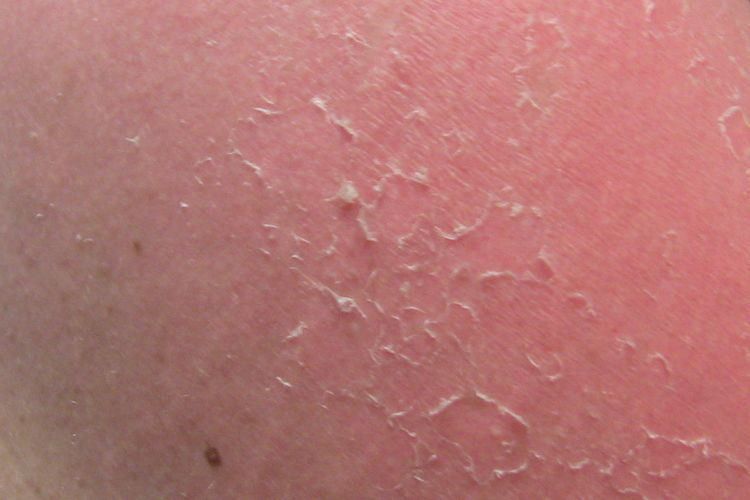ICD-10 R23.4 | ||
 | ||
Desquamation (from Latin desquamare, meaning 'to scrape the scales off a fish'), also called skin peeling, is the shedding of the outermost membrane or layer of a tissue, such as the skin.
Contents
Skin
Normal, nonpathologic desquamation of the skin occurs when keratinocytes, after moving typically over about 14 days, are individually shed unnoticeably. In pathologic desquamation, such as that seen in X-linked ichthyosis, the stratum corneum becomes thicker (hyperkeratosis), imparting a "dry" or scaly appearance to the skin, and instead of detaching as single cells, corneocytes are shed in clusters, forming visible scales. Desquamation of the epidermis may result from disease or injury of the skin. For example, once the rash of measles fades, there is desquamation. Skin peeling typically follows healing of a first degree burn or sunburn. Toxic shock syndrome, a potentially fatal immune system reaction to a bacterial infection such as Staphylococcus aureus, can cause severe desquamation; so can mercury poisoning. Other serious skin diseases involving extreme desquamation include Stevens–Johnson syndrome and toxic epidermal necrolysis (TEN). Radiation can cause dry or moist desquamation.
Eyes
Eye tissues including the conjunctiva and cornea may undergo pathological desquamation in diseases such as dry eye syndrome. The anatomy of the human eye makes desquamation of the lens impossible.
